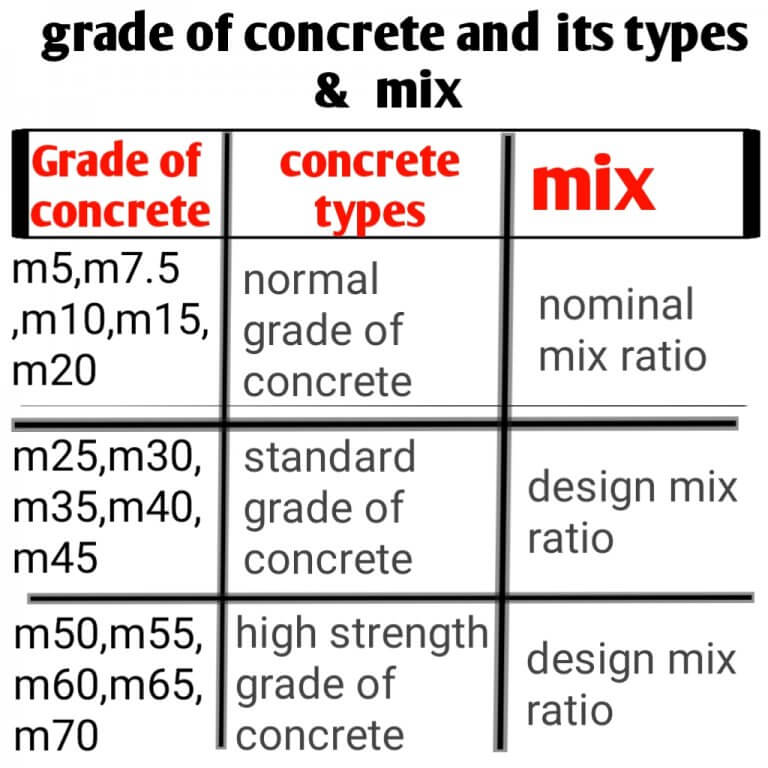
Concrete mix ratio Table concrete grade types Civil Sir
The four basic ingredients for making concrete are: Portland cement, sand, aggregate (stone) and water. The strength of concrete mixture depends on the ratio in which these four ingredients are mixed. Concrete mix ratio of 1:3:3 - On mixing 1 part cement, 3 parts sand with 3 parts aggregate produces concrete with a compressive strength of 3000 psi.

Concrete mix ratio Table concrete grade types Civil Sir
Some necessary mixing ratios for concrete are 1:2:3, 1:3:3, 1:2:4. These mixing ratios are based on the relationships of cement : sand : stones in that law. The ratio you do will depend on what psi power you require. To make concrete there are 4 basic materials you require: Portland cement - You can purchase this in a 95lb bag

Concrete grade M25, M20, M15, M10 & M7.5, meaning, their uses & mix ratio Civil Sir
Standard Concrete Mix/Ratio As per Indian Standards (IS 456-2000) concrete mixes are segregated into different grades. It starts from M5 and goes up to M40. M refers to Mix and the numbers are to signify the strength of Mix N/mm2. The material proportion for each Grade is different. M10 = 1:3:6 M15 = 1:2:4 M20 = 1:1.5:3

12 Concrete mix grades mostly used? Everything about concrete grades.
Standard Mix Ratio for Reinforced Concrete. 1:1.5:3, Cement, Sand, and Coarse Aggregates = 1 part, 1.5 parts, 3 parts by volume. This is the standard mixture that builders use when they want to ensure the concrete has sufficient strength to resist applied loads and provide durability over time.
ALL YOU WANT TO KNOW ABOUT CEMENT MIX RATIO AND ITS USES lceted LCETED INSTITUTE FOR CIVIL
Concrete mix ratios are usually expressed as a series of numbers, such as 1:2:3 or 1:3:5. The first number represents the amount of cement, the second number represents the amount of sand, and the third number represents the number of aggregates. For example, a mix ratio of 1:2:3 means that there is one part cement, two parts sand, and three.

Concrete Mix Ratio What Is It? What Is 123?And More. Handyman's World
Concrete Mix Ratio = Part 1 × Part 2 × Part 3. In this formula, Part 1, Part 2, and Part 3 represent the proportions of the different ingredients in the concrete mix. The actual ingredients may vary depending on the project requirements, but common components include cement, aggregates (such as sand and gravel), and water.
Concrete Floor Slab Mix Ratio Flooring Site
Introduction How to hand mix concrete so it delivers maximum strength and durability. Mixing isn't complicated and when done well, the concrete should last a lifetime. Tools Required Bucket Dust mask Hoe Rubber gloves Safety glasses Stiff bristle brush Wheelbarrow Materials Required Concrete mix

Floor Slab Concrete Mix Ratio Viewfloor.co
A common mix ratio for good concrete is 1-2-4. So what exactly is a 1-2-4 concrete mix? It's quite simple - one part portland cement, two parts sand, and fo.

Concrete mix ratio Various grades of concrete Concrete mix design YouTube
To use the concrete mix ratio calculator, follow these steps: Open the web page containing the calculator in a web browser. Select the desired mix ratio from the dropdown menu. The available options include C20 1:2:4 concrete mix calculator , C25, C30, C35, C40, and C45. Each mix ratio represents a specific combination of cement, sand, and.
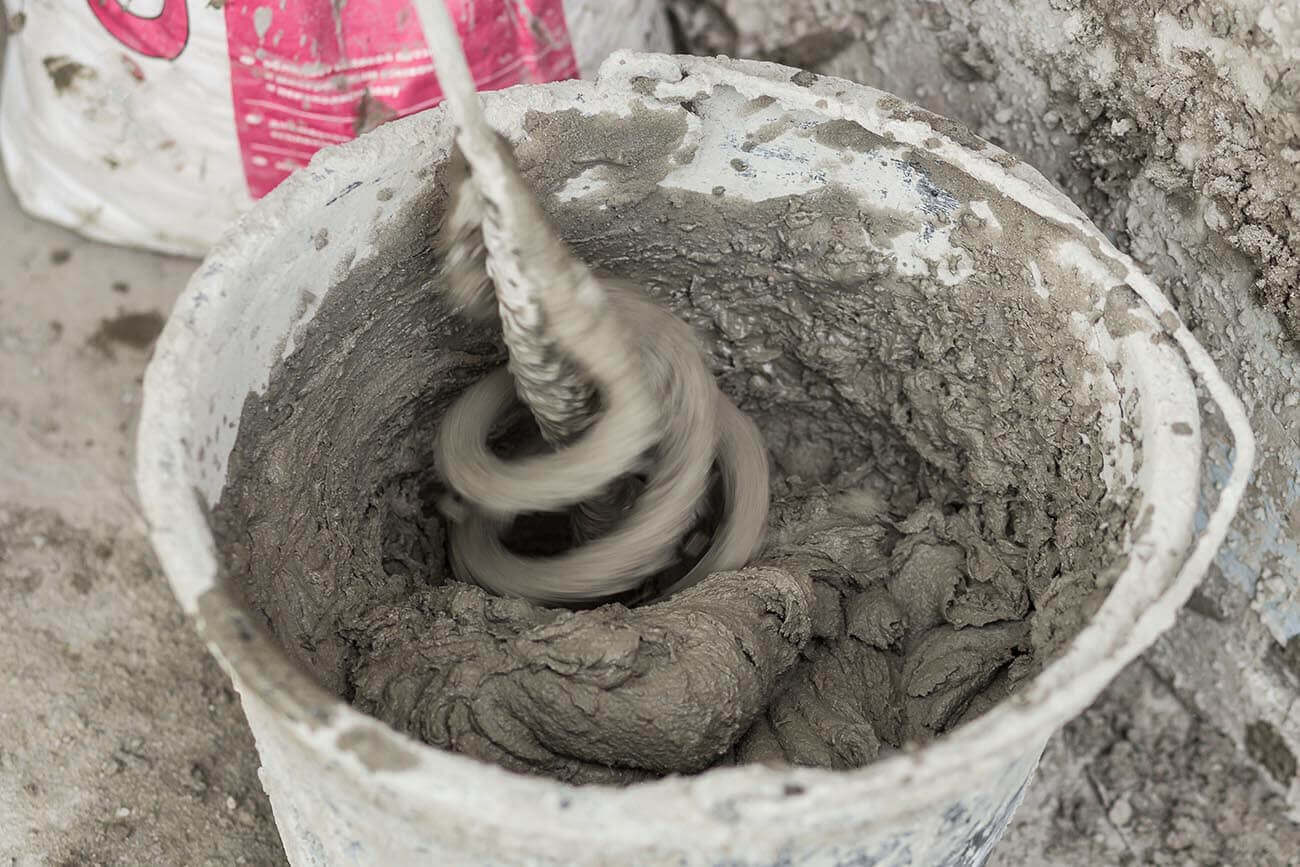
Concrete Mix Ratio What Is It? What Is 123?And More. Handyman's World
Concrete mix ratios are crucial for the right consistency, and the basic ingredients include aggregate, sand, cement powder, and water. Common ratios are 1-2-3 and 1-2-4, with higher sand content resulting in weaker concrete and more aggregate leading to increased strength. Concrete grades, such as M5, M10, and M15, indicate the minimum.
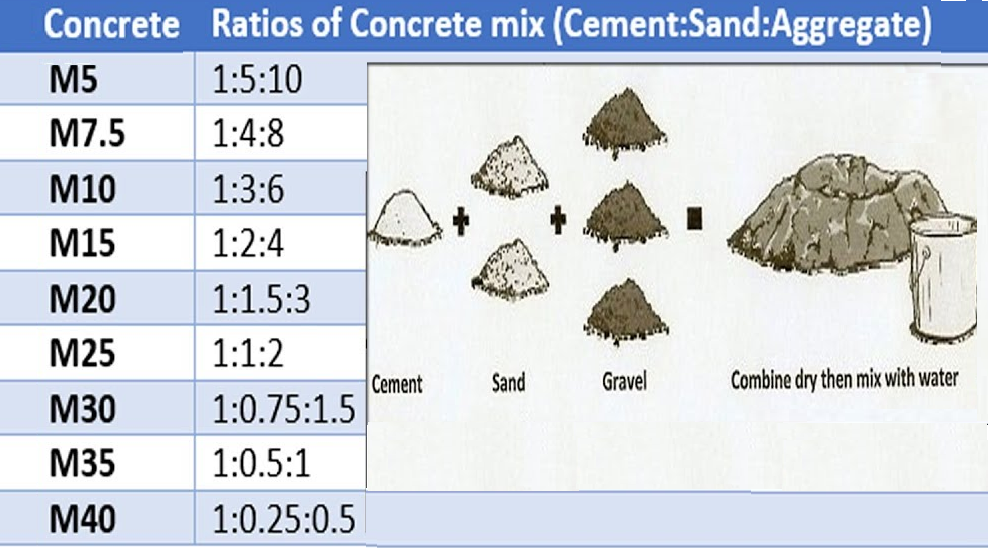
What is the strongest concrete mix ratio?
A concrete mix ratio is usually expressed by a set of numbers separated by colons, as is the case with a 1:2:3 ratio. This tells the mixer that they need to add 1 part cement powder, 2 parts sand, and 3 parts aggregate in order to create the desired concrete consistency.
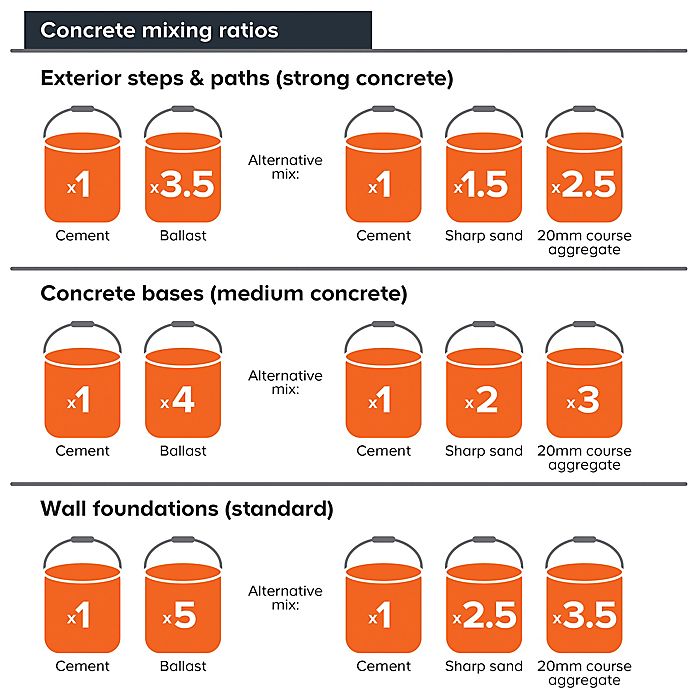
Cement, mortar and concrete buying guide Ideas & Advice DIY at B&Q
The basic concrete mixing ratios are 1:2:3, 1:3:3, and 1:2:4. The previously mentioned mixing ratios are based on the proportion of cement, sand, and stone used in order. The PSI strength you need will determine the ratio you utilize. To produce concrete without the help of a concrete contractor, you will need Portland cement, sand (coarse or.

Concrete Mix Ratio The Basics Of Cement Mix Design Orlandi
The quantity of water in the cement paste is adjusted per the desired workability. For foundations and mass concrete work, the preferred concrete mix ratio is 1:4:8 while normal construction work can work with rations 1:1.5:3 and 1:2:4. Construction work that requires a high strength concrete subsequently requires higher grade concrete with.
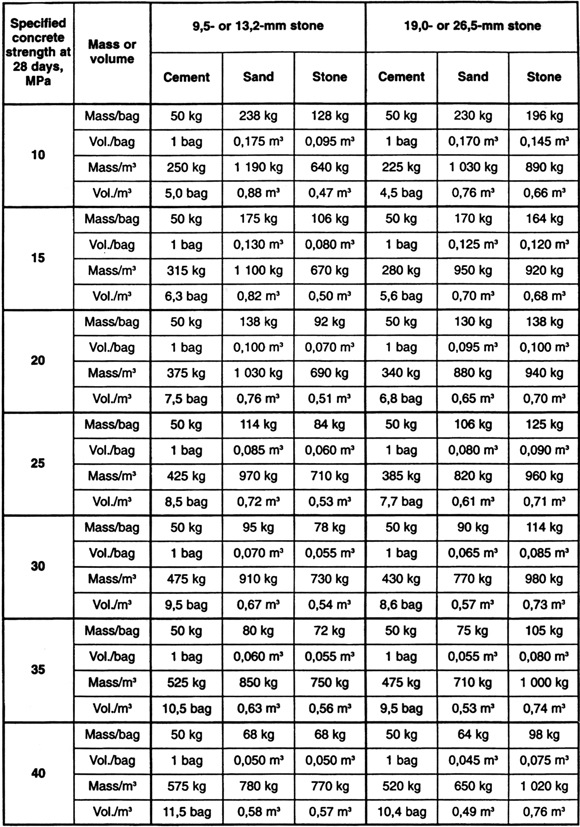
Concrete Mixes by Weight and Volume
Some basic mixing ratios for concrete are 1:2:3, 1:3:3, 1:2:4. These mixing ratios are based on the proportions of cement : sand : stone in that order. The ratio you use will depend on what psi strength you need. a good mixture for concrete has 4 basic ingredients To make concrete there are four basic materials you need:
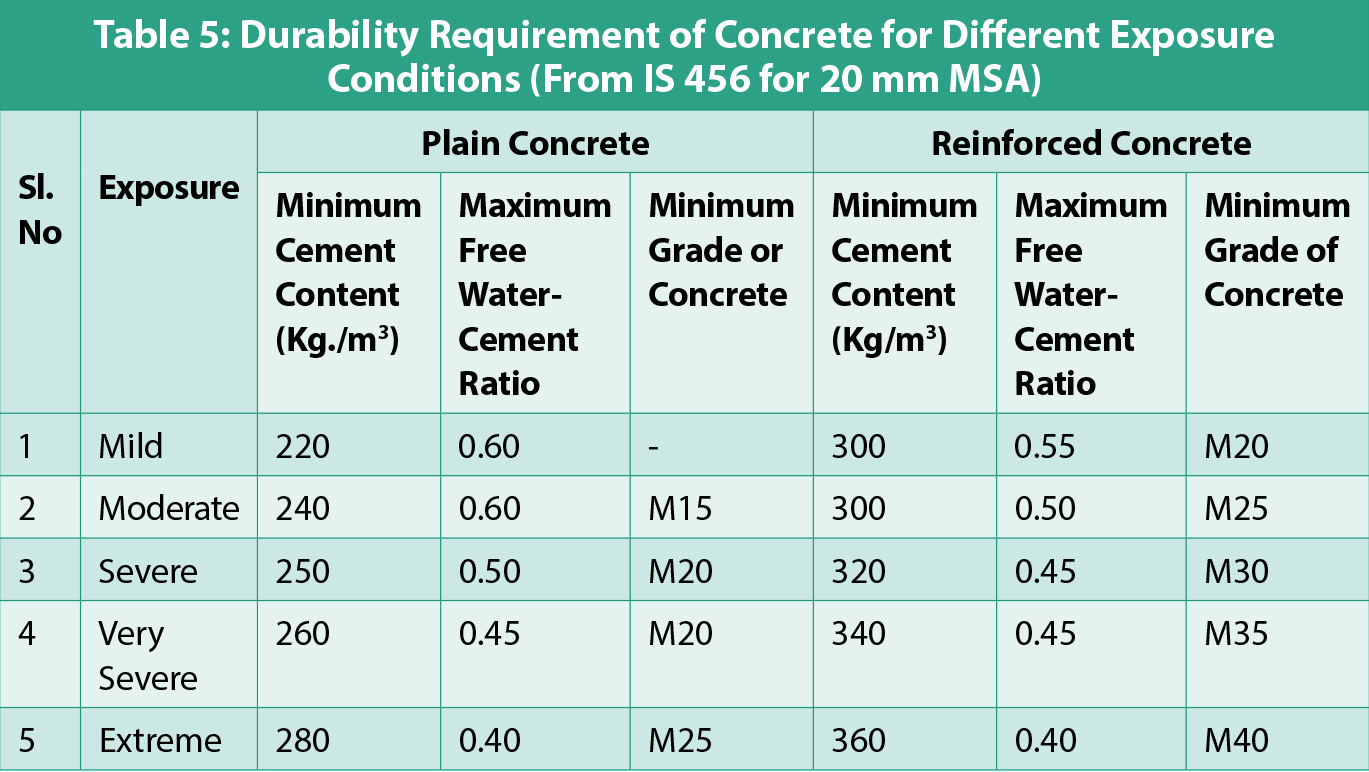
Concrete Mix Proportions For Different Types Of Concrete CECR
Parts are commonly used to represent the mix ratio. A typical concrete mix ratio, for example, is 1:2:3, which equals one part cement to two parts sand to three parts aggregates. The water-to-other-ingredients ratio is also important, and it can range between 0.4 and 0.6 depending on the type of concrete and its intended use.

In this article, we explained how to determine the concrete mix ratio in relation to the number
Concrete mix ratios are the proportions of concrete components such as cement, sand, aggregates and water. These mix ratios are decided based on type of construction and mix designs. However, building codes provides nominal and standard concrete mix ratios for various construction works based on experience and testing.